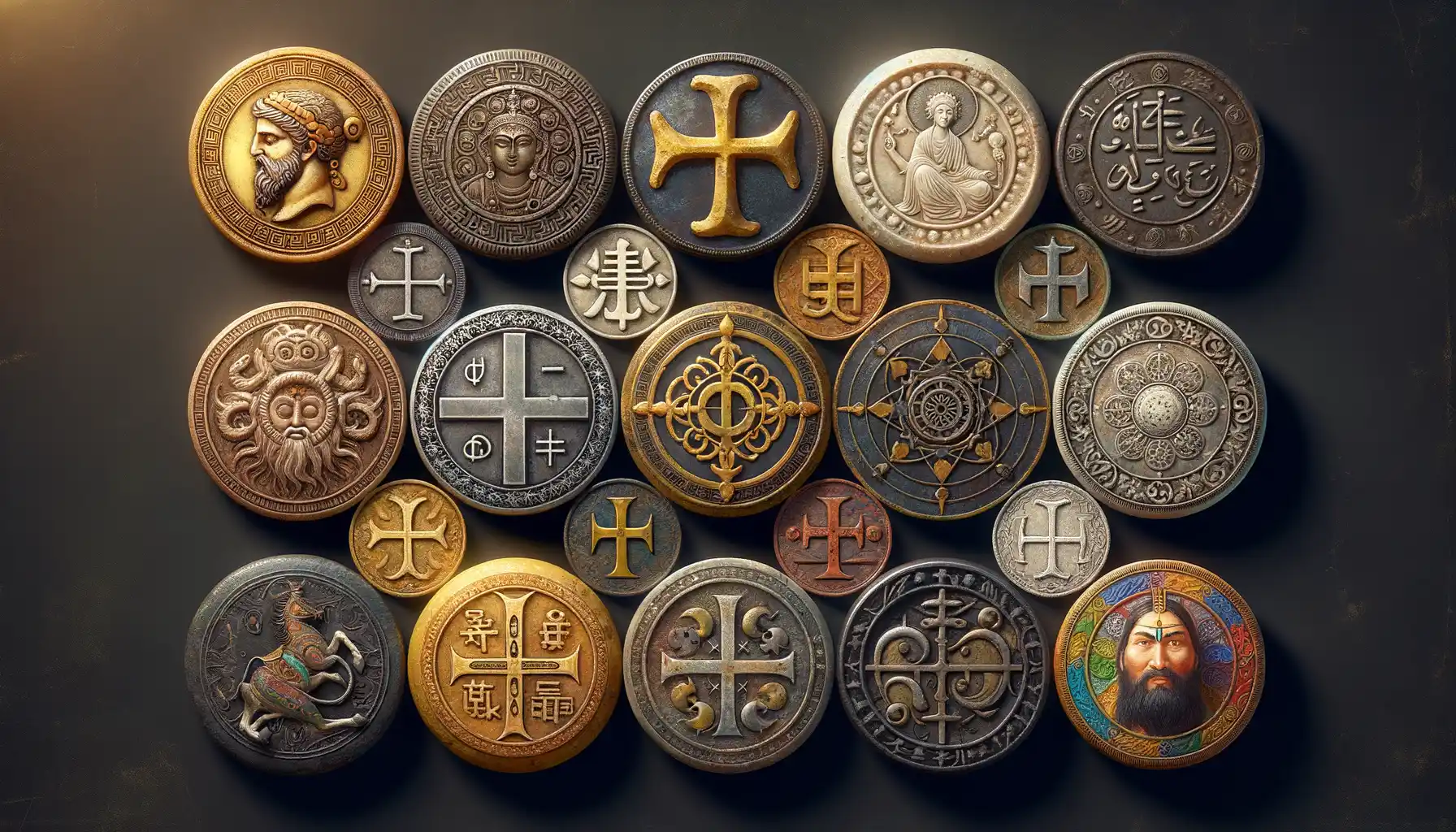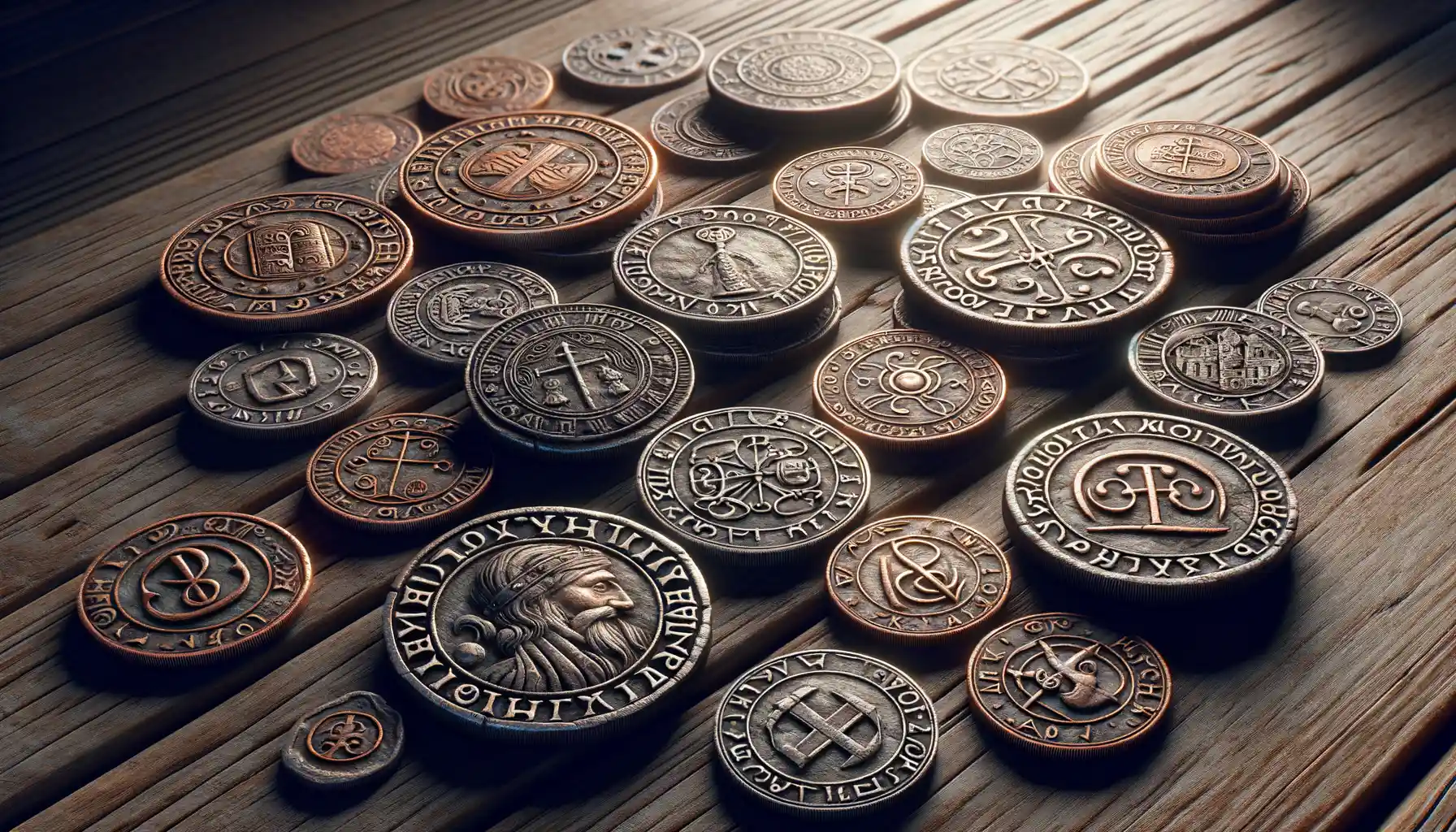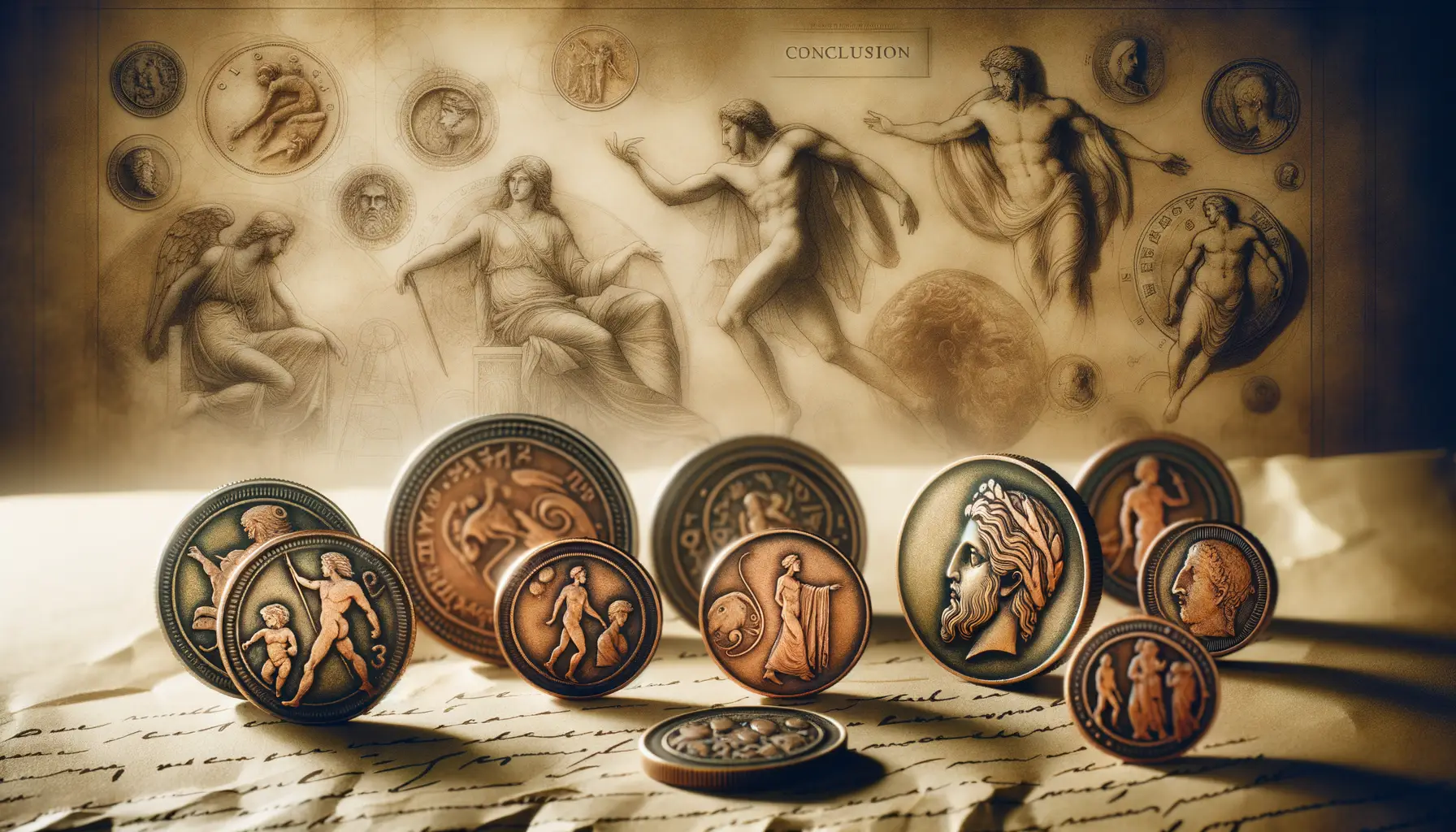Introduction to Coins in Ancient Mythology
Coins as Gateways to the Ancient World
Have you ever held an ancient coin in your hand and wondered about its story? These small, unassuming discs of metal are far more than currency; they’re powerful symbols deeply woven into the fabric of ancient mythology. Picture this: a coin embossed with the wise owl of Athena, glinting in the sunlit marketplace of classical Athens. That simple artifact connected ordinary citizens to their gods, heroes, and legends in ways that still resonate today.
Coins didn’t just facilitate trade—they acted as bridges between the mortal and divine realms. From the coiled serpents of Norse mythology to the fierce thunderbolt of Zeus, these images told stories of creation, power, and protection. Can you imagine a traveler carrying a coin etched with Hermes, trusting it would grant them safe passage on dangerous roads?
- Offerings to deities: Coins were often cast into sacred fountains or buried in temples as tokens of devotion.
- Talismans of power: Some coins were believed to bring luck or ward off evil spirits.
These engraved relics whispered myths into the hands of those who held them—a tangible reminder that the gods were always near.
Symbolism and Iconography on Ancient Coins
![]()
Decoding the Messages Hidden in Ancient Coins
Ancient coins are like tiny, pocket-sized works of art—but they’re more than just beautiful. They’re a language, rich with symbols that speak directly to the beliefs and priorities of their time. Imagine holding a silver denarius in your hand. On one side, you see the profile of a proud emperor; on the other, a majestic eagle, wings outspread. This isn’t random decoration. The eagle wasn’t just a bird—it was a symbol of power, divine favor, and Roman dominance. Each detail whispers a story.
But it’s not only emperors and animals gracing these miniature canvases. The Greeks loved to feature their gods and goddesses on coins, often pairing them with objects connected to their myths. A coin from Athens, for example, frequently shows Athena on one side and an owl (her sacred animal) on the other. And let’s not forget about the hidden messages:
- A laurel wreath could symbolize victory or peace.
- A trident might evoke the sea god Poseidon’s might.
- Even a lightning bolt hinted at the wrath and strength of Zeus.
Every coin, no matter how small, told a political or divine narrative—a quiet proclamation carried in a pocket or exchanged in a marketplace.
Religious Significance of Coins Across Cultures

Coins as Sacred Symbols of Faith
Imagine holding a coin that not only jingles with value but hums with spiritual meaning. Across countless cultures, coins have served as much more than mere currency—they’ve been vessels of belief, offerings to the divine, and powerful symbols of faith.
In ancient Greece, for instance, coins often bore the faces of gods like Athena or Zeus, as if these celestial beings were granting their blessing to every transaction. Meanwhile, in India, coins bearing sacred Hindu motifs—like the revered lotus flower—weren’t just traded; they were cherished during religious festivals like Diwali, symbolizing prosperity and divine favor.
- Romans tossed coins engraved with Jupiter’s Eagle into sacred springs, hoping to secure his protection.
- Ancient Egyptians included coins in burials, believing they would pay the ferryman in the afterlife for safe passage.
Gifts to Gods and Guardians
Beyond their practical use, coins often became intimate offerings. In Chinese temples, worshippers placed copper coins under statues of Guanyin, the Goddess of Mercy, seeking her compassion. Similarly, European pilgrims left small silver coins at shrines, hoping to summon miracles or express gratitude for answered prayers. These humble tokens spoke louder than words ever could, bridging the earthly and the divine.
Each coin tells its own story of devotion, reminding us that sometimes, even the smallest object can carry the weight of eternity.
Coins as Storytellers and Myth Preservers

Ancient Coins as Living Time Capsules
Coins are more than cold, hard metal—they’re whispers from the past, etched with stories and legends that shaped civilizations. Picture holding a coin minted centuries ago; its worn edges might have traveled through bustling marketplaces, religious ceremonies, or the hands of ancient rulers. Each scratch, each symbol carved into its surface, tells a tale.
Take, for example, the coins of ancient Greece, where you might find the image of the mighty god Zeus gripping thunderbolts, a clear nod to his omnipotent power. Or consider Roman denarii bearing the serene face of Venus, a visual ode to love and beauty. These weren’t just currency—they were emblems of a society’s beliefs, its myths, and its values.
- Celtic coins: swirling patterns evoke nature’s mysticism and gods tied to earth and sky.
- Chinese cash coins: square holes in circular designs symbolized the union of heaven and earth.
These little artifacts didn’t just buy goods—they preserved cultural identities. They were storytellers in metal, ensuring that even as empires crumbled, their myths would endure, eternal as the coins themselves.
Conclusion: The Legacy of Coins in Mythological Contexts

The Echoes of Ancient Stories Hidden in Coins
Imagine holding a coin from centuries past—a small, weighty circle of metal. At first glance, it seems ordinary, but lean closer, and it’s like peering through a time-worn window. These coins were more than currency; they were whispers of gods, heroes, fears, and aspirations etched into metal. Each one tells a story drenched in mythological significance.
Take the silver drachma of ancient Greece with the striking profile of Athena, goddess of wisdom. Her owl, perched on the opposite side, wasn’t just a cute mascot—it was a profound symbol of guidance and clarity for a society navigating the chaos of life. Across the Mediterranean, Roman denarii proudly displayed Jupiter or Venus, reminding those who held them that divine favor always had its price.
- Themes of power and victory shone through depictions of conqueror deities.
- Fertility gods adorned coins exchanged during harvest festivals, ensuring nature’s blessings.
- Monarchs commissioned myth-laden coins, aligning themselves with celestial forces.
The hand that passed these coins could have belonged to a farmer offering thanks to Demeter, or a merchant seeking Neptune’s protection for their sea voyage. They weren’t just spending money—they were carrying myths, perpetuating legends.
Coins as Bridges Between the Mortal and Divine
In the hands of the ancients, coins became offerings consecrated to the gods, bridging the world of man and the immortal. Consider the practice of placing small coins in the mouths of the dead—payment for Charon, the ferryman of the underworld. It’s an unspoken promise: wealth may perish, but myth endures.
These metallic storytellers didn’t simply pass through markets; they traveled between realms. A bronze coin adorned with Anubis, the jackal-headed guide, once clinked onto the altar of an Egyptian temple. Somewhere else, a coin bearing the image of Thor’s hammer may have rested in a warrior’s palm, a silent prayer for strength.
Coins are proof that the myths we hold close never fade. They gleam, even today, like tiny constellations scattered across the vast tapestry of history.



